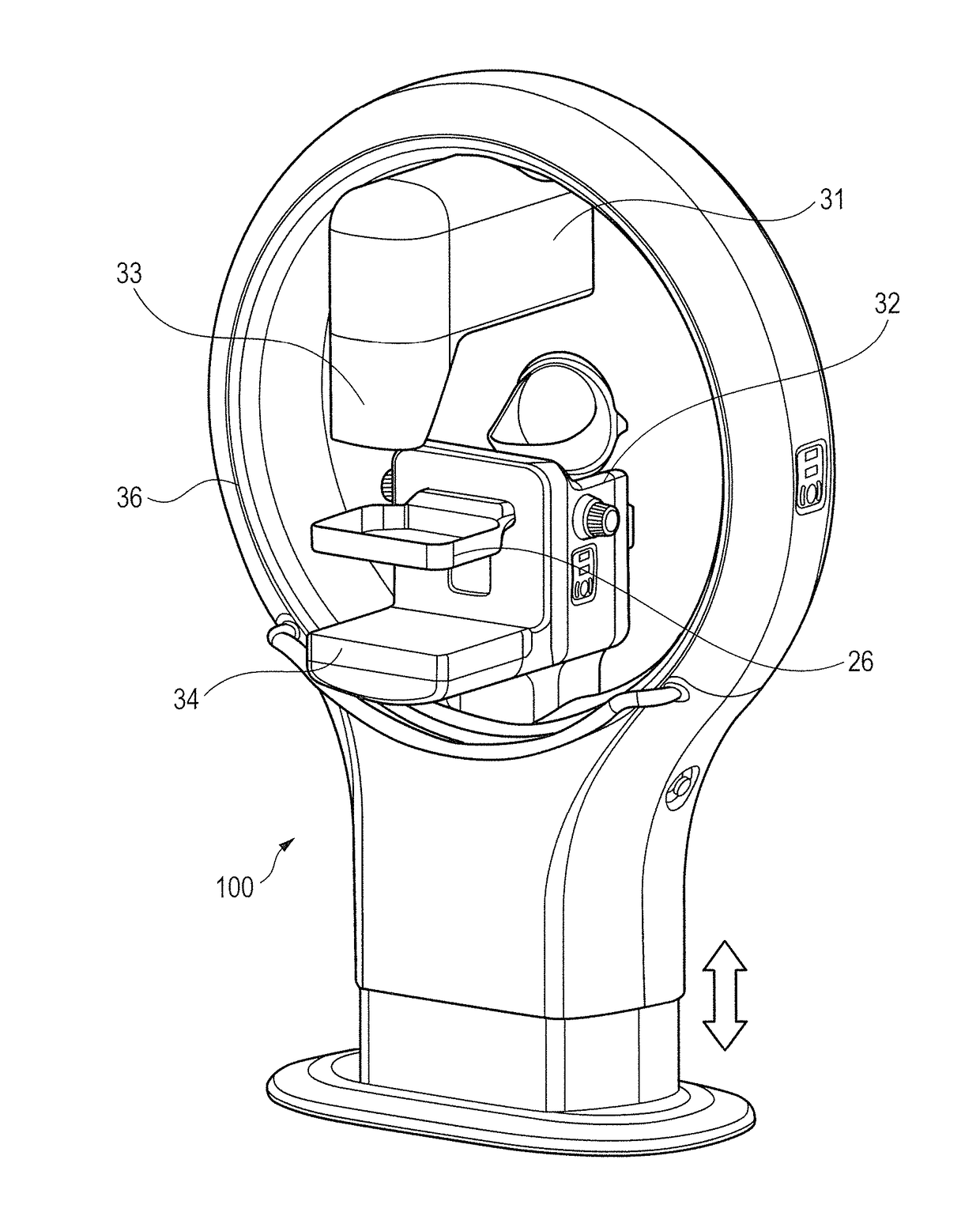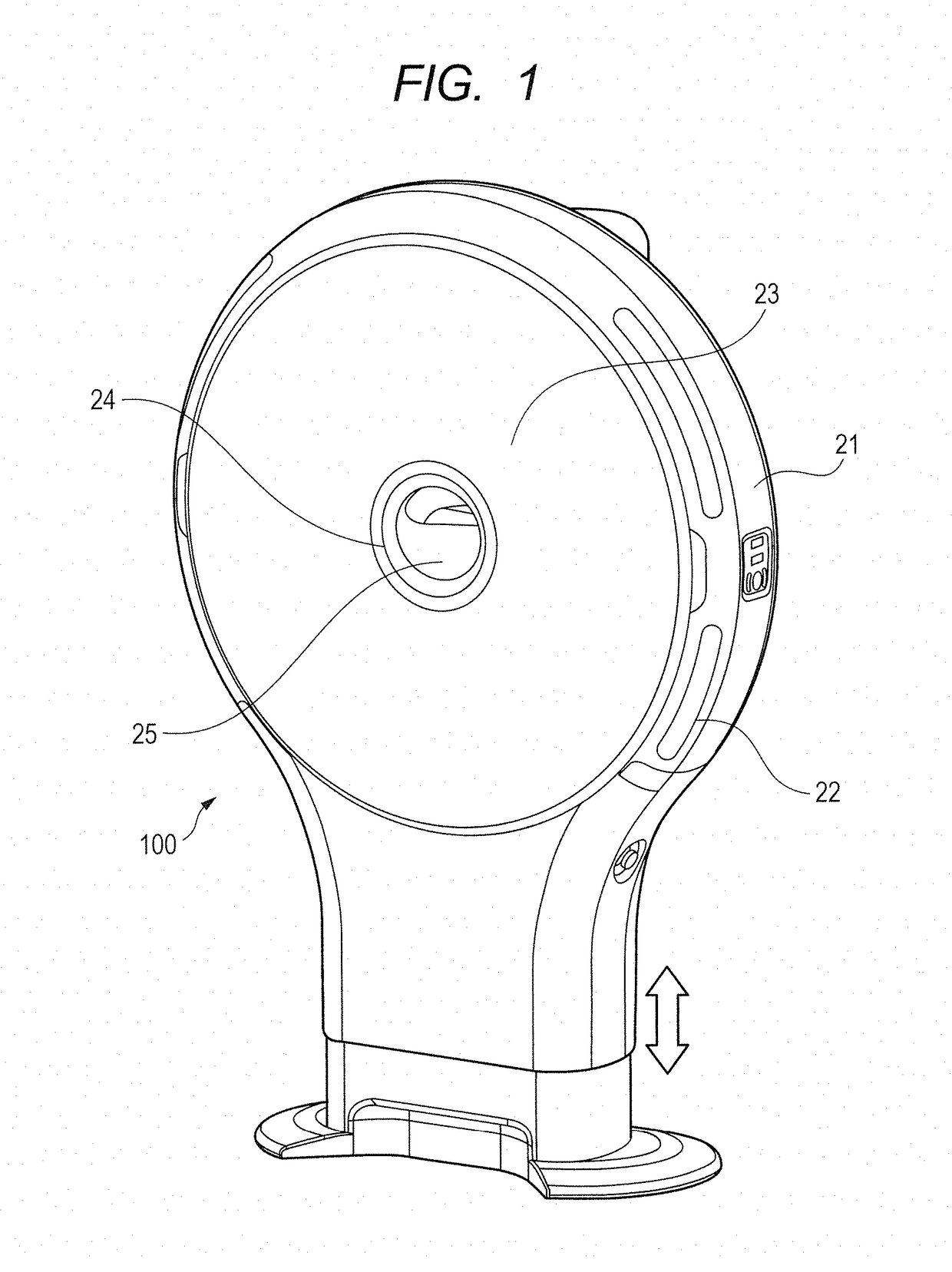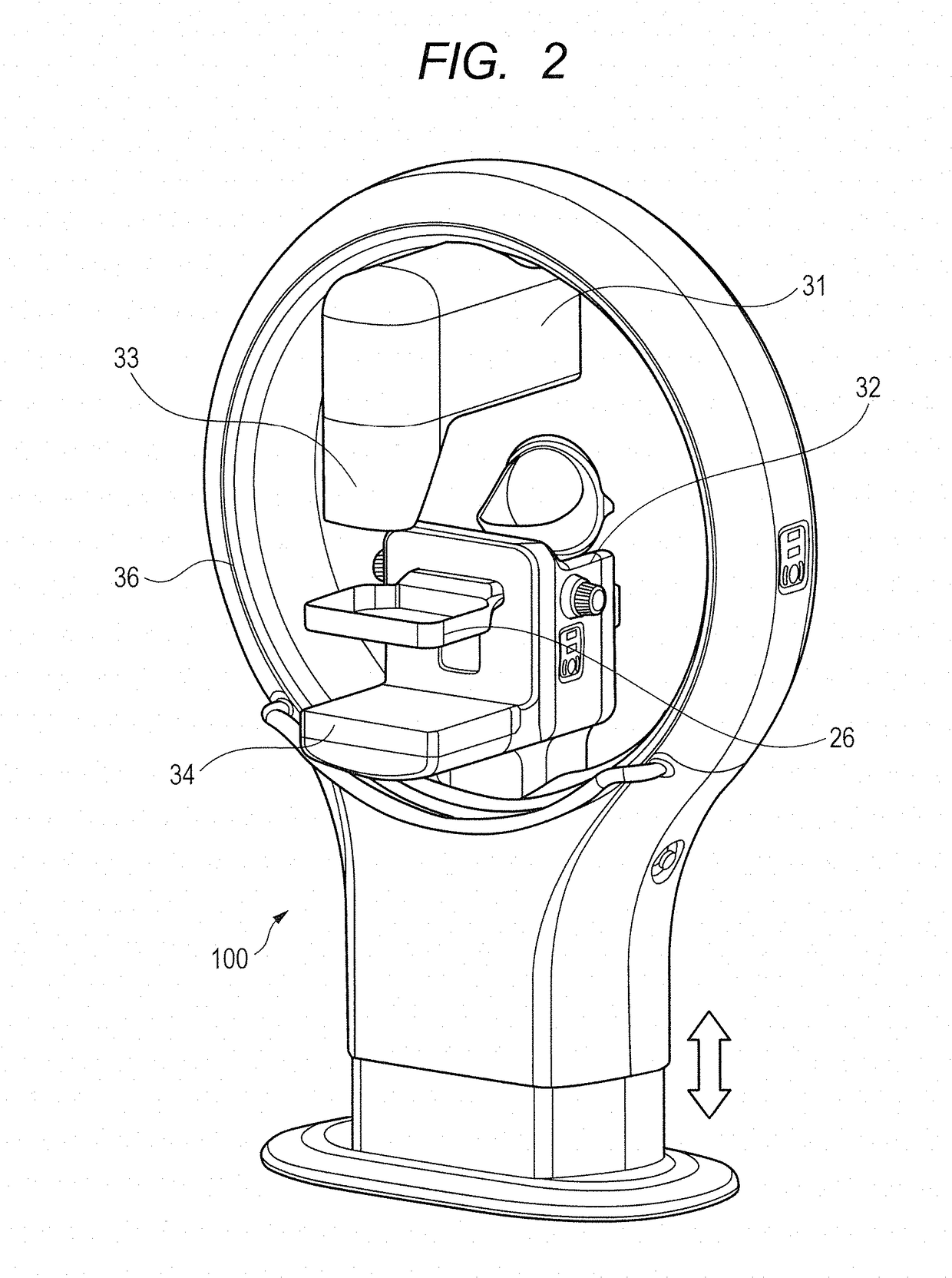Radiation imaging apparatus, and insertion state determination method
a radiation imaging and state determination technology, applied in the direction of radiation beam directing means, patient positioning for diagnostics, application, etc., can solve the problems of deteriorating the sensitivity and specificity of lesion detection, blind areas are likely to be generated, and subject's body tilt is a physical burden
- Summary
- Abstract
- Description
- Claims
- Application Information
AI Technical Summary
Benefits of technology
Problems solved by technology
Method used
Image
Examples
first embodiment
[0054]FIGS. 7Aa and 7Ab are diagrams each illustrating an example of the insertion state of the breast in the first embodiment. The radiation imaging system (medical image imaging system) 100 suitably manages blind areas in the C area and C′ area (outside upper area) which are predilection areas of breast cancer. The blind areas need to be suitably managed, except in a case where the radiological image of the whole body of the subject P is captured by a CT apparatus. In this case, to put it simply, the suitable management of blind areas indicates that the blind areas in the C area (outside upper area) and D area (outside lower area) of the breast is set to be smaller than the blind areas in the A area (inside upper area) and B area (inside lower area) of the breast.
[0055]FIG. 7Aa is a diagram illustrating a state where the left breast is inserted into the imaging area in the upright breast CBCT, as viewed from the leg portion side of the subject P. The rotatable frame 36 which is pr...
second embodiment
[0091]In the radiation imaging system (medical image imaging system) 100 of the first embodiment, the determination unit 104 determines the insertion state of the breast based on at least one of the length, the area, the volume, the shape and the pressure of the inserted breast inserted into the imaging area for the medical image from the insertion portion. On the other hand, in the radiation imaging system (medical image imaging system) 100 of a second embodiment, the determination unit 104 determines the insertion state of the breast based on at least one of the length, the area, the volume, the shape and the pressure of a non-inserted breast which is not inserted into the imaging area. Note that the descriptions of the components, functions, and operations of the second embodiment that are similar to those of the above embodiment are omitted, and differences between the second embodiment and the above embodiment are mainly described below.
[0092]FIG. 8 is a diagram illustrating an...
PUM
 Login to View More
Login to View More Abstract
Description
Claims
Application Information
 Login to View More
Login to View More - R&D
- Intellectual Property
- Life Sciences
- Materials
- Tech Scout
- Unparalleled Data Quality
- Higher Quality Content
- 60% Fewer Hallucinations
Browse by: Latest US Patents, China's latest patents, Technical Efficacy Thesaurus, Application Domain, Technology Topic, Popular Technical Reports.
© 2025 PatSnap. All rights reserved.Legal|Privacy policy|Modern Slavery Act Transparency Statement|Sitemap|About US| Contact US: help@patsnap.com



